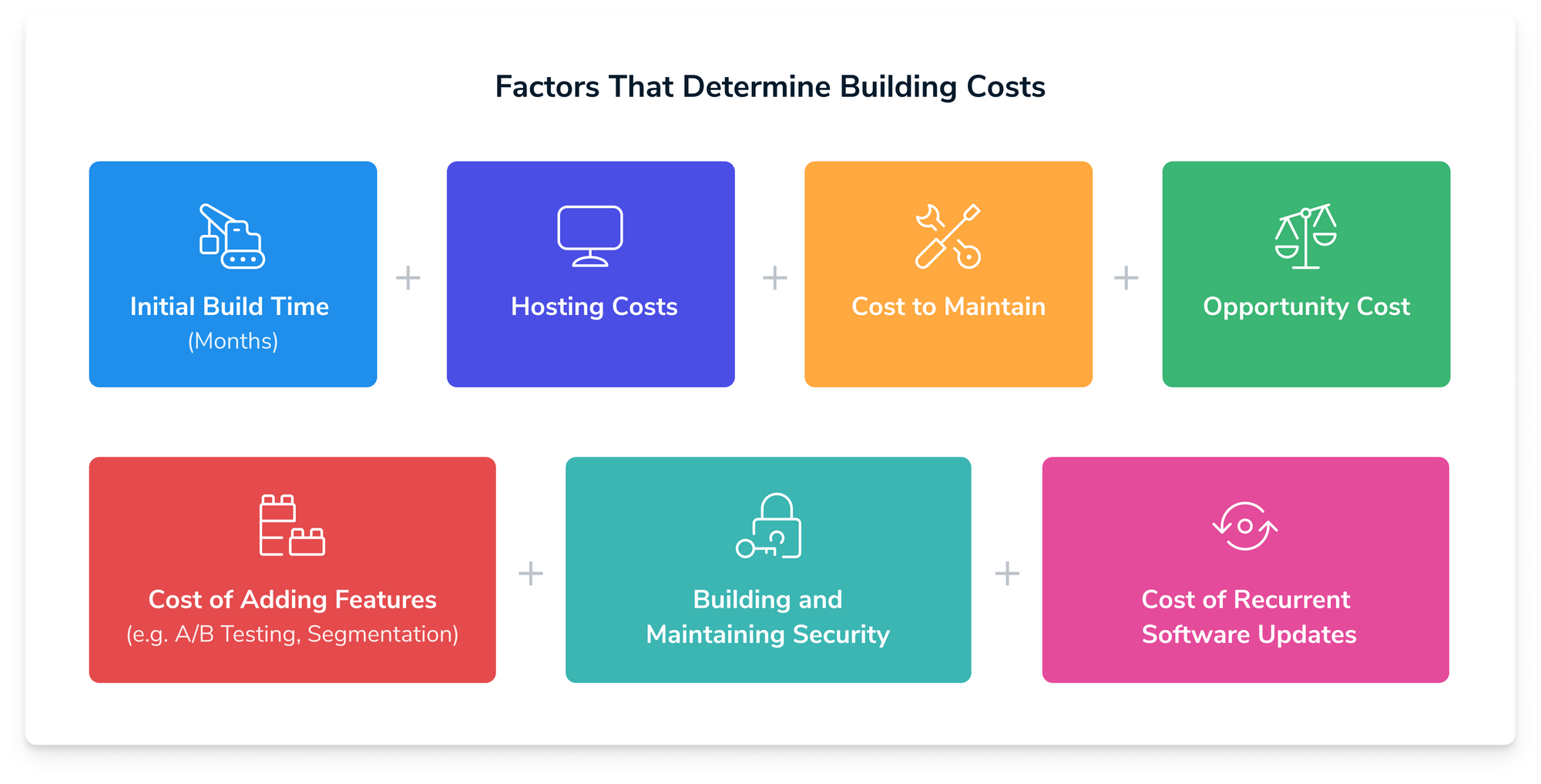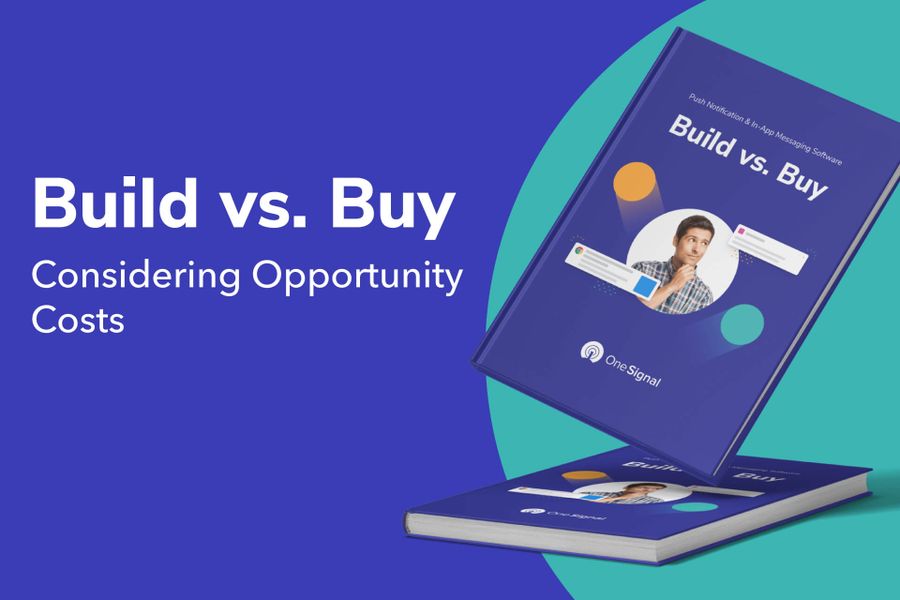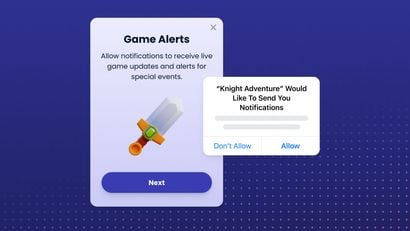The question of build vs. buy has long been debated between passionate developers on both sides, but the answer almost certainly depends on the specific company and product being considered. Even so, what should always be a part of the conversation is opportunity cost — and surprisingly, many companies fail to take this key component into consideration.
To Build or Buy?
As it relates to push notification and in-app messaging software, some companies where messaging is a core component of the business may feel the need to build truly custom messaging solutions. This option can give them the exact customer engagement solution they might be looking for — no more, no less. In general, building is usually better suited towards large-scale companies, who have the bandwidth and resources required for this ongoing investment (and even then, there are tradeoffs.)
On the other side, purchasing a best in-class customer engagement tool can allow a company to focus all its development resources on the core business mission, like growing subscribers, reducing time to market, and increasing product functionality. Integrating push notifications from a third-party vendor is almost always easier, and generally more cost-efficient than building. While building and maintaining the hardware plus software in-house requires developers with very specialized skills, buying places the burden of monitoring the industry and regulations, as well as consistently improving and updating the tool, on the software provider.
For the full breakdown of build vs. buy considerations, check out our complete guide.

Don’t Forget About Opportunity Costs
Team leaders looking to make this build vs. buy decision almost always weigh the specific monetary cost of purchasing a mobile messaging software against the time and resources their team will need to commit to building. But what many fail to understand is that it’s not just the value of the time and resources that matter; it’s also the lost opportunity of what those skilled engineers could be doing with that time. What new features could they be developing? What critical upgrades could they be making to your product? And going forward, when Chrome or Firefox periodically update how their users and websites can use push notifications, what key KPI-focused project will you need to pull them away from to make sure your messaging tool is compliant?
As you weigh the idea of building your own messaging tool, there are some important features and potential issues to consider. You will need developers who….
- Have experience managing systems that can reliably connect to both HTTP/1 and HTTP/2 APIs. Keep in mind that API changes, which happen once or twice a year alongside new iOS/Android version releases, sometimes undergo more dramatic changes
- Understand the low-level details of application development on iOS, Android, and Web for Web Push. For example, iOS notifications must sometimes be handled differently based on whether an app is in focus, in background, or terminated.
- Know Objective-C & Swift for iOS, and Java or Kotlin for Android

A Proof of Concept
Before investing the time and resources required for a full-out implementation, a Proof Of Concept can demonstrate whether a SaaS solution will bring business value and integrate seamlessly into one’s company tech stack.
Conducting a successful POC that delivers meaningful outcomes begins with defining KPIs, determining the resource requirement on your team, and ends with evaluating the cost of investment versus the cost of building the technology yourself. While the approach slightly differs between mobile and web, this template can be used for either channel.
Final Thoughts
The true cost of building goes well beyond the initial investment. It includes the upfront and ongoing opportunity cost of what you’re missing out on developing while your team is focused on building and maintaining an internal solution. For some companies, this extreme customization and control is well worth the full cost. But for many, once the opportunity cost is layered on top of the actual time and resources of building, the full cost is hard to justify to the business.
If you’re considering the question of build vs. buy for messaging, download our in-depth guide on both options for push notifications and in-app messaging software, including a guide on how to conduct a successful proof of concept to validate your decision.
Think you’re ready to buy? Get started with OneSignal for free, or get in touch with our sales team, who can answer any question or schedule a demo.




